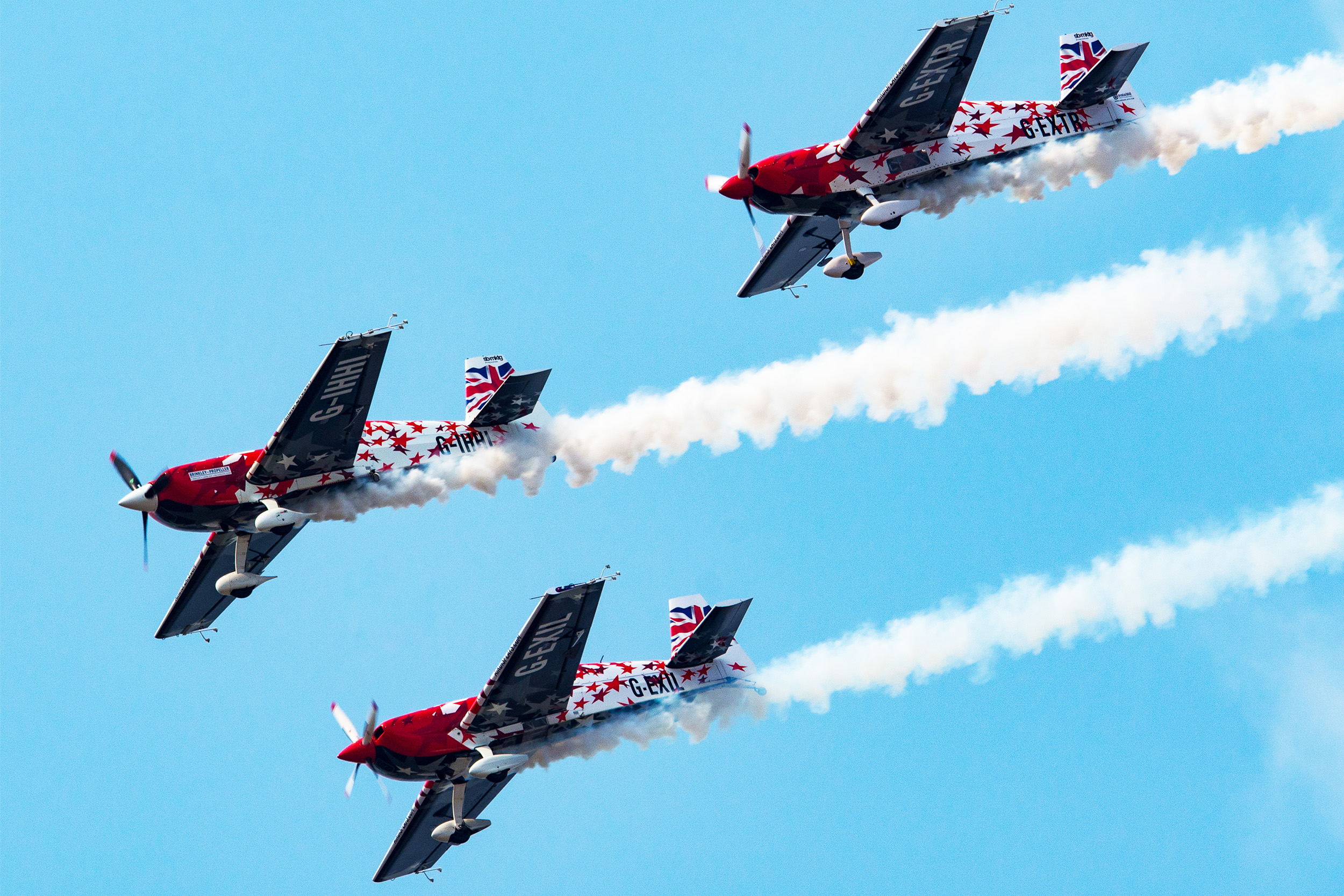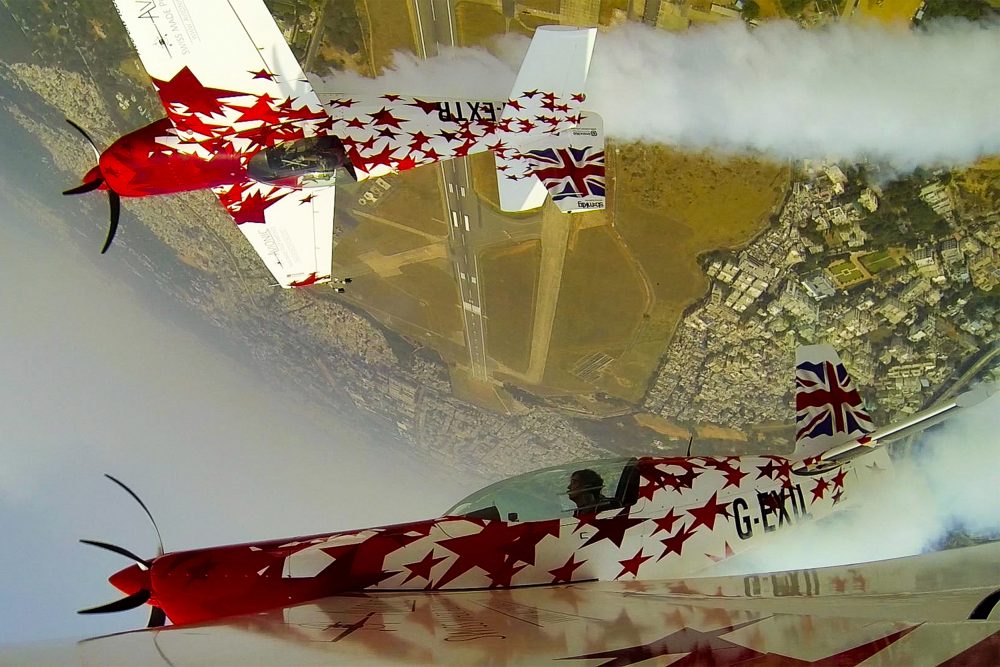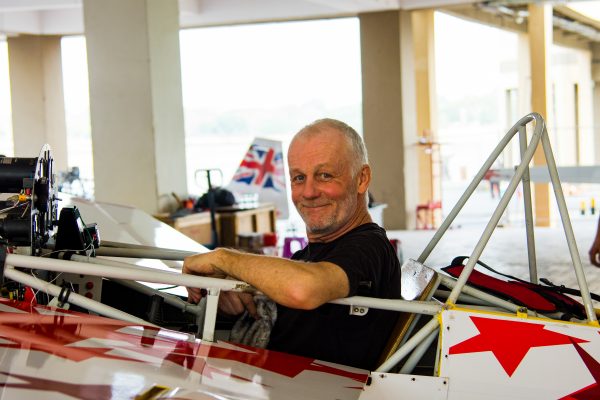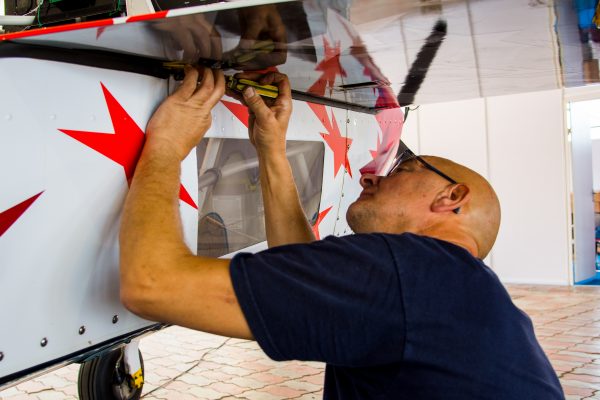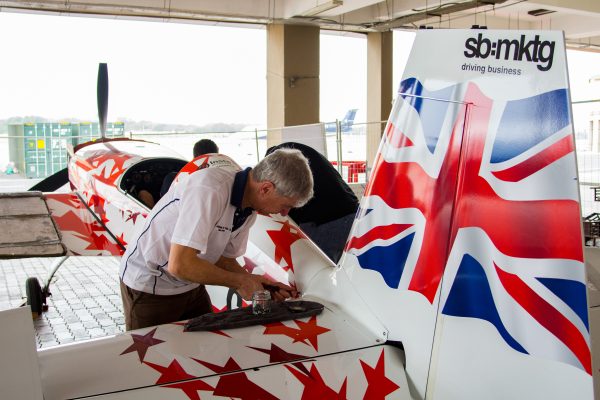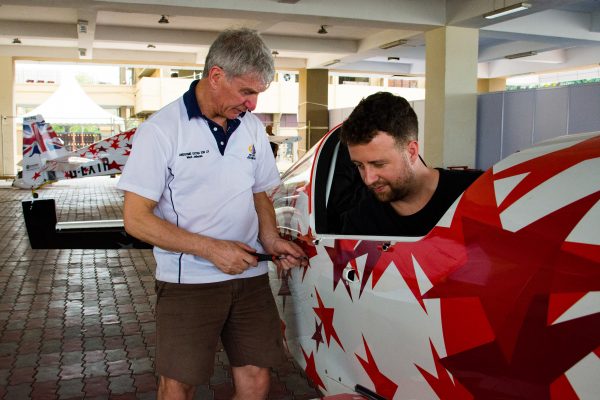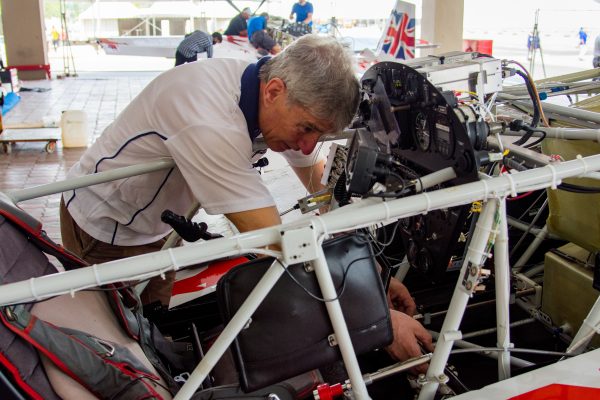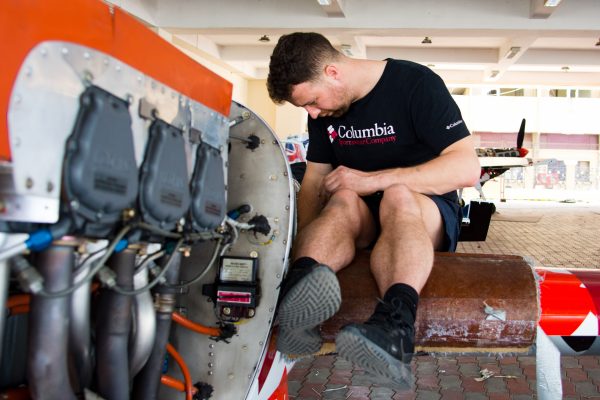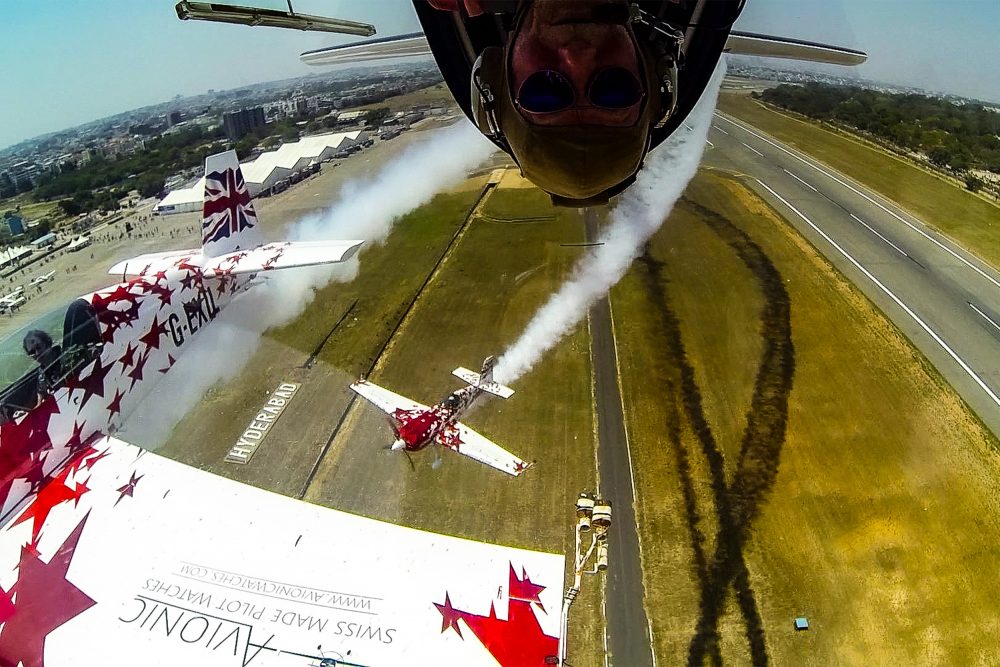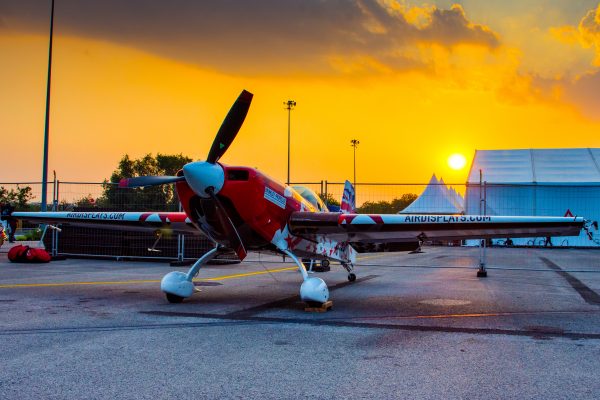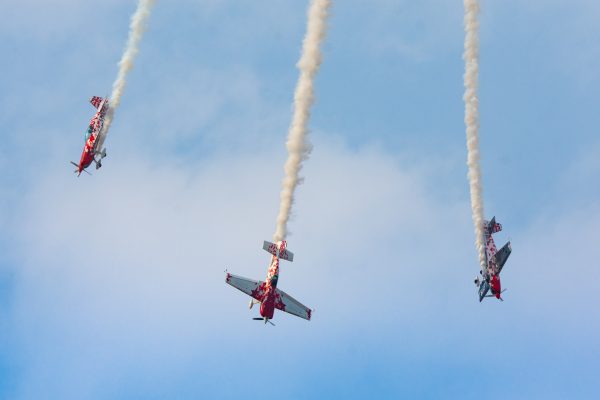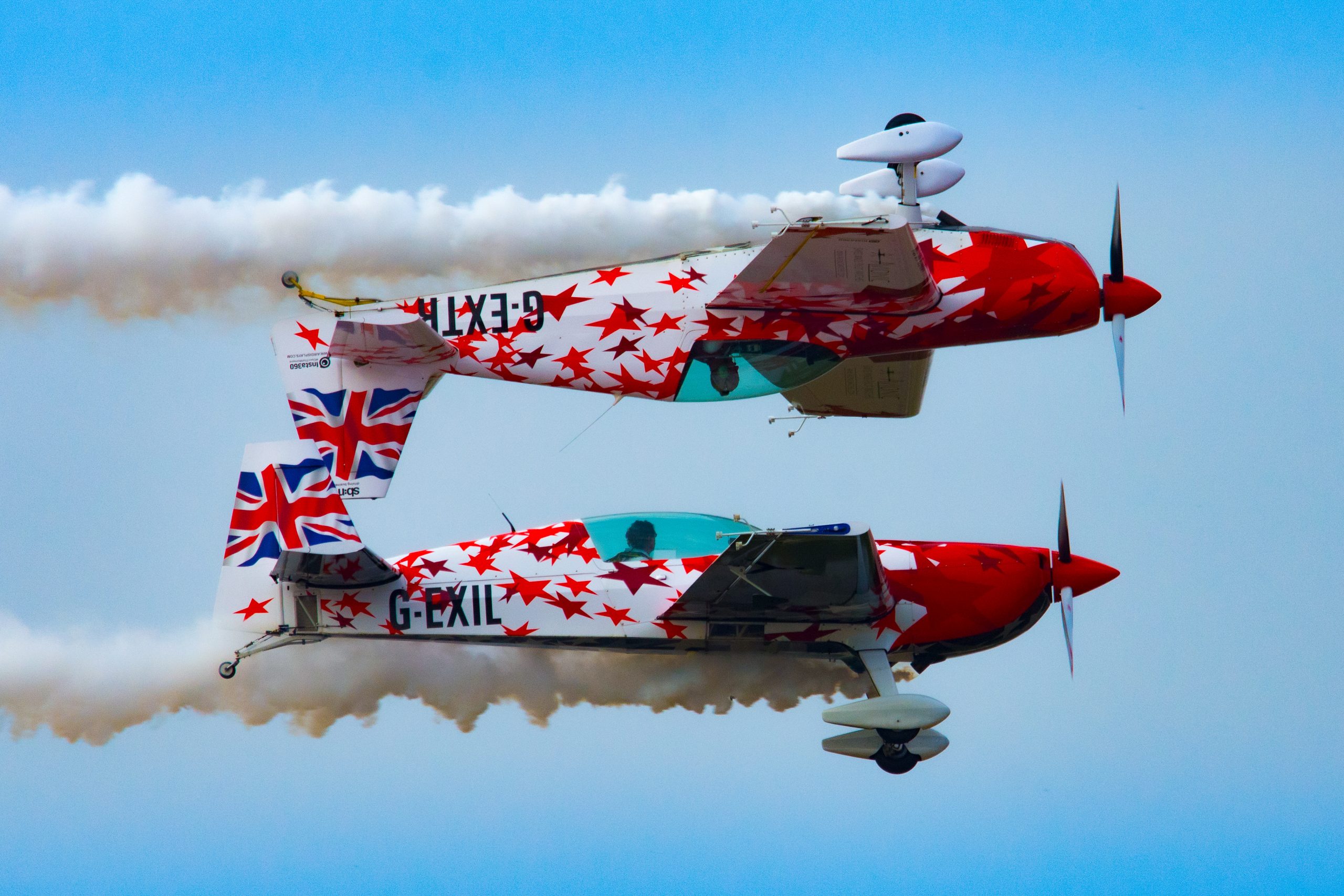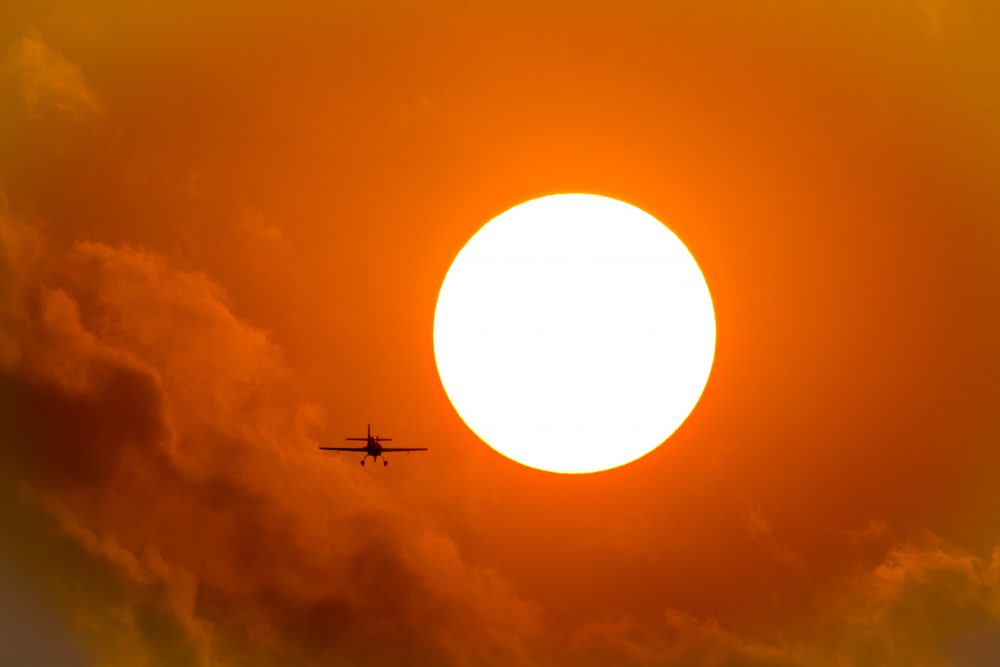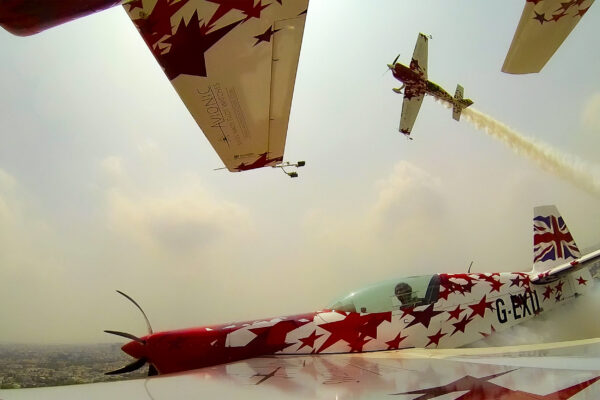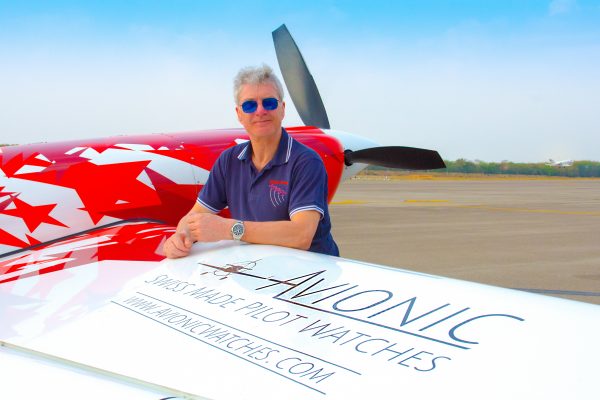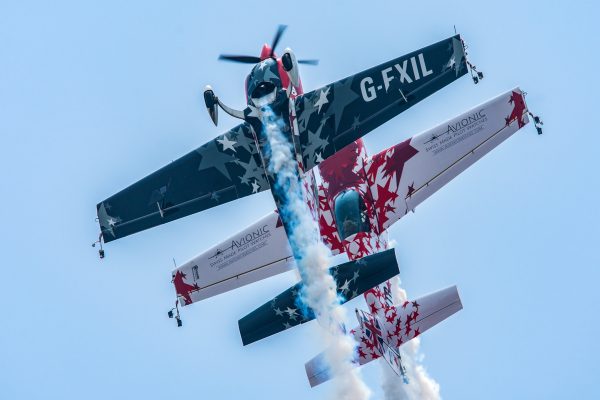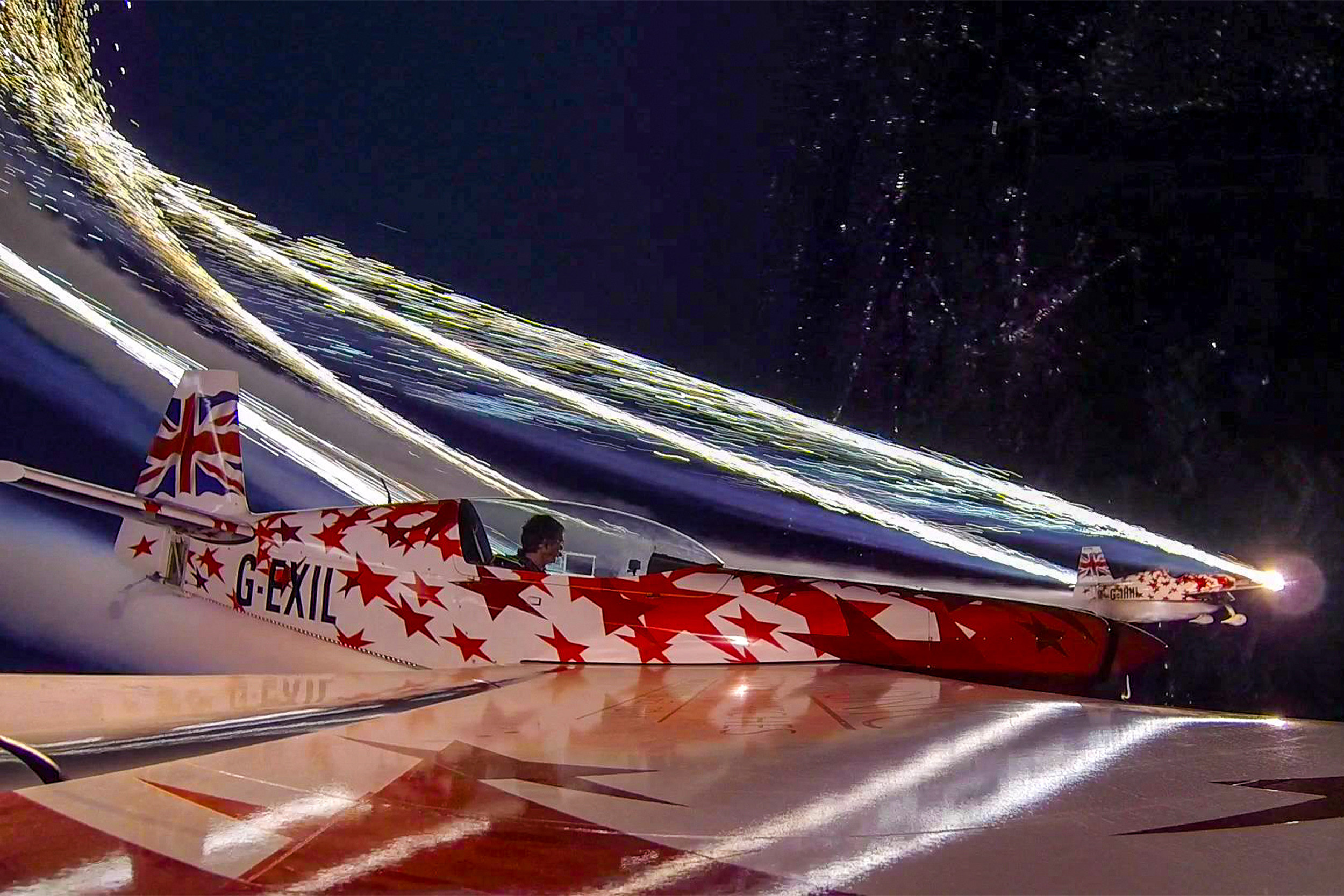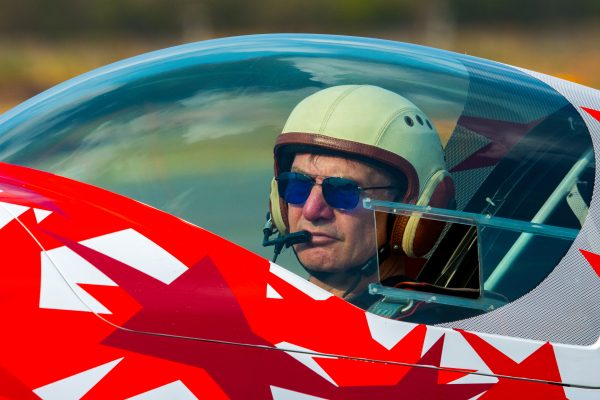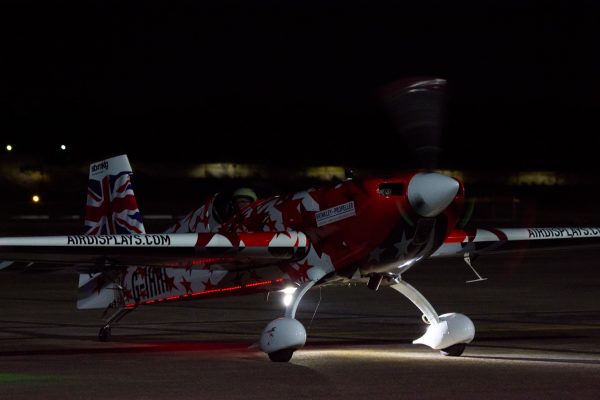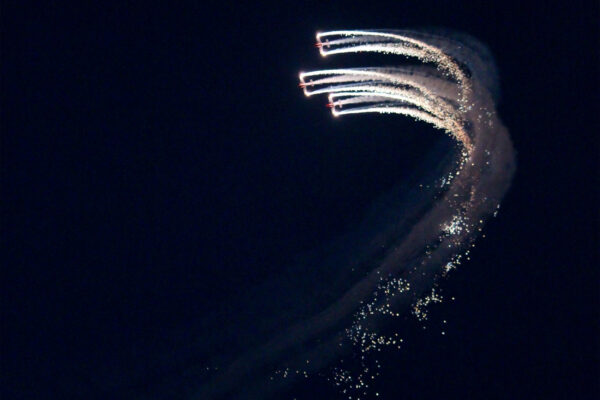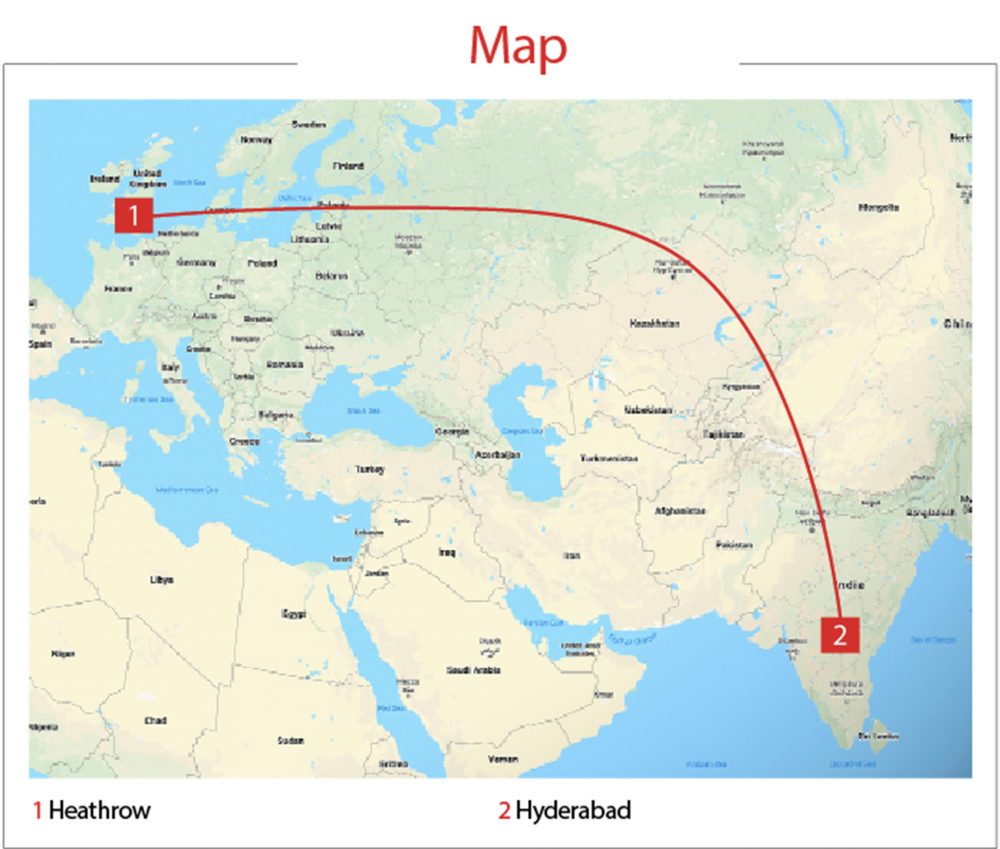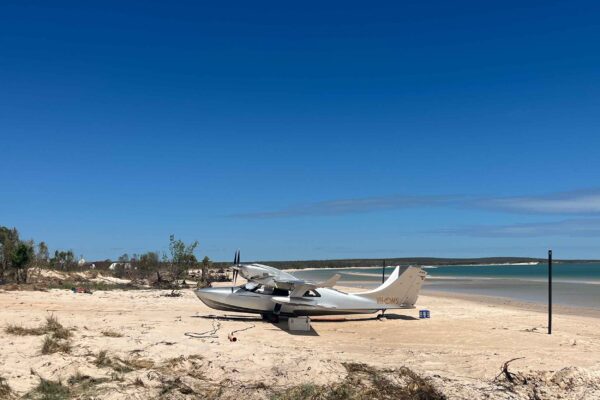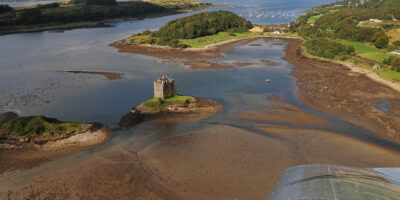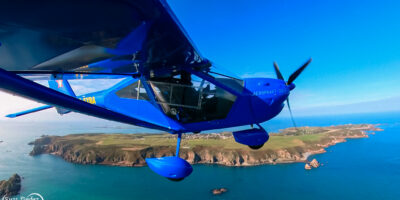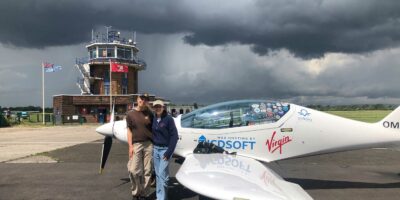Last time we were here in 2016, the temperature hit 45°C and energy management became a major concern for us in sequence design. Today it’s just a balmy 36°C! Begumpet Airport is some 1,800ft above sea level, so factoring in the temperature and density altitude rockets up. This shows up as a very noticeable loss of performance as the engine, airframe and propeller are fighting for air. The aeroplanes respond as though they are ‘tired, fed up and in need of a siesta’.
The team has in mind a series of manoeuvres, including energy gainers such as gentle, floaty half Cubans in between those that are more dramatic and crowd pleasing, but more costly in terms of energy management. For energy, think bank accounts, bank balances and accessibility. Take a snapshot of an aeroplane in flight and it has three kinds of energy – speed, height and chemical energy in the form of fuel.
The first two, speed and height, are in a ‘current account’, are easily accessible, and you can do what you like with them immediately. Fuel in the tank is like money in a ‘deposit account’. The rate at which you can get your hands on it is known as power available: 180hp in a Pitts S1S and a smidgen over 300hp in one of our Extras. The question is all about spending. Do you fly a bit too fast, pull back too hard, or use the smoke too much? If you’ve a tendency towards any of these then you’ll run out of height, interesting options – and eventually run aground!
The team is used to long days. We fly in formation twice and Mark trials some new locally made pyros after sunset. It’s fair to say, they’re still a work in progress.
Back in our hotel rooms there is of course one other bedtime puzzle to solve: turning off the bedroom lights! It’s day four and none of us are any the wiser. How hard can it be? When you’re tired and bleary eyed the rows of buttons on either side of the bed and the ones by the door become an enigma. Logic is pointless, because as one light goes off another one comes on. Giving up on the ones within easy reach, you resort to the master switch by the door. Fumbling your way back to bed across the room in the dark you stub a toe on the mini bar, collide with the swivel chair and let out a little whimper. Tomorrow is the final practice day, so a good night’s sleep is called for.


